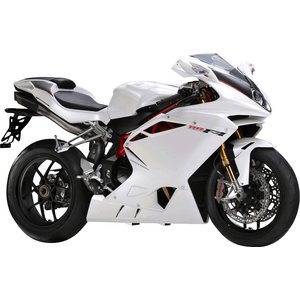MV Agusta F4 1000 RR (2013–2016): A Timeless Superbike Experience
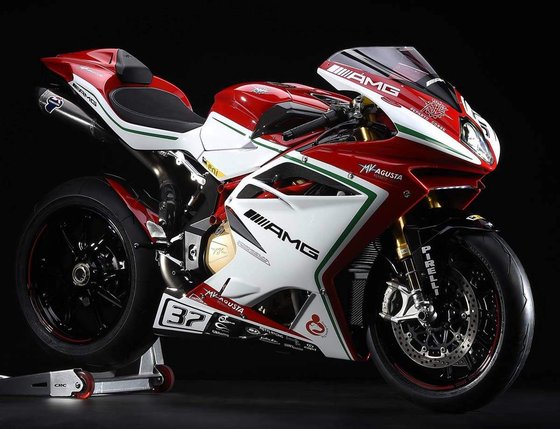
Introduction
When it comes to motorcycle artistry fused with raw performance, the MV Agusta F4 1000 RR (2013–2016) stands as a masterpiece. This Italian icon isn’t just a machine—it’s a statement. Designed to blur the lines between track weapon and road-going sculpture, the F4 RR embodies the spirit of MV Agusta’s racing heritage while delivering cutting-edge technology. Having spent time with this generation of the F4, it’s clear why it remains a benchmark for emotional engineering. Let’s dive into what makes this motorcycle unforgettable.
Design and Aesthetics
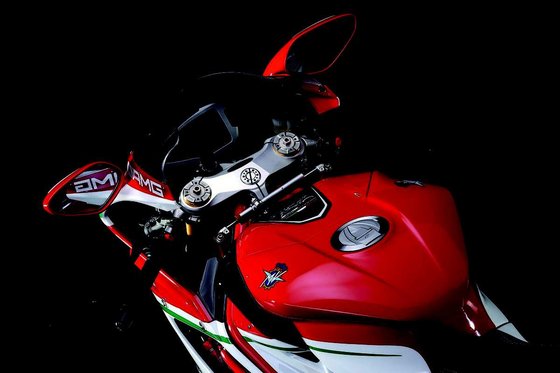
The F4 1000 RR is a visual symphony. From its signature quad-exit exhaust to the razor-sharp lines of its fairings, every detail screams purpose. The 2013–2016 models refined an already legendary silhouette, adding LED light guides along the front spoiler for improved visibility and a modern touch. The RC variant took it further with carbon fiber panels, forged alloy wheels, and a livery echoing MV’s World Superbike ambitions.
Standing next to the F4, the craftsmanship is evident. The trellis frame isn’t just structural—it’s a centerpiece, painted to contrast against the bodywork. The seat height (830 mm / 32.7 inches) feels committed, but the narrow tank design lets riders grip without strain. Even the mirrors, often an afterthought, fold neatly to slice through air at speed.
Engine and Performance
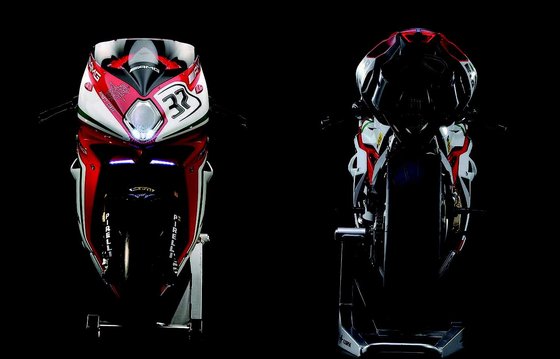
At the heart of the F4 lies a 998cc inline-four engine, a marvel of mechanical theater. The base RR model delivers 195 HP at 13,400 RPM, while the limited-edition F4 RC pushes 212 HP with its race kit. Torque peaks at 110.8 Nm (81.7 lb-ft), but it’s the delivery that astonishes. From 8,000 RPM onward, the engine transforms—a howl builds as the tachometer races to its 14,000 RPM redline.
The “Corsa Corta” (short stroke) design prioritizes revs over low-end grunt, making city riding a chore but transforming open roads into a playground. The RC’s titanium con rods and magnesium covers shed weight, while the TSS variable-length intake ensures throttle response stays razor-sharp.
Top speed? Officially 291 km/h (180.9 mph), though the RC nudges 302 km/h (187.7 mph). Acceleration is brutal but controlled, with the slipper clutch taming aggressive downshifts.
Riding Experience
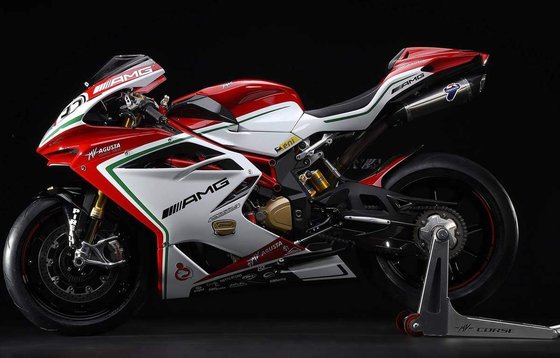
Swing a leg over the F4, and you’re immediately aware this isn’t a compromise. The riding position is aggressive—pegs high, bars low—but the seat’s padding is surprisingly forgiving. At 191 kg (421 lbs) dry, the RR feels light on its feet, while the RC’s 175 kg (385 lbs) borders on supernatural.
Handling is telepathic. The steel trellis frame and Sachs/Marzocchi suspension (Öhlins on the RC) balance rigidity and feedback. Flicking into corners feels effortless, aided by a 56.3-inch wheelbase and 23.5° rake. Mid-corner bumps? The suspension soaks them up without unsettling the chassis.
Braking is equally sublime. Brembo M50 monoblocs bite 320mm discs with surgical precision. Later models added Bosch ABS with a “Race Mode” that minimizes intervention—perfect for track days.
Electronics and Technology
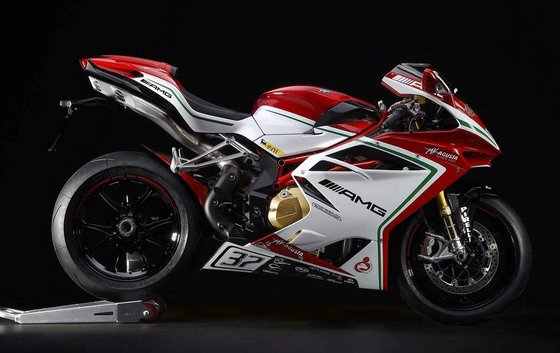
The F4’s MVICS 2.0 suite was ahead of its time. Ride-by-wire throttles offer four engine maps (Rain, Normal, Sport, Custom), each tweaking throttle response, torque, and engine braking. Traction control spans eight levels, and the inertial platform leans into corners, adjusting intervention based on angle.
The RC added an electronic quickshifter (EAS 2.0) for clutchless up/downshifts, shaving milliseconds off lap times. Custom maps let riders tune parameters like throttle sensitivity and rev limits—a rarity in pre-2015 bikes.
Competition
How does the F4 stack up against its rivals? Let’s break it down:
- BMW S1000RR (2015):
- Power: 199 HP | Weight: 204 kg (450 lbs)
-
The BMW’s inline-four is smoother, and its electronics package (Dynamic Traction Control, Wheelie Control) is more user-friendly. However, it lacks the F4’s theater and exclusivity.
-
Ducati Panigale 1199:
- Power: 195 HP | Weight: 188 kg (414 lbs)
-
Ducati’s V-twin delivers grunt low down, but the F4 dominates above 10,000 RPM. The Panigale’s monocoque chassis is stiffer, but MV’s trellis frame offers more feedback.
-
Yamaha YZF-R1 (2015):
- Power: 200 HP | Weight: 199 kg (439 lbs)
-
Yamaha’s crossplane crank gives character, and its suspension is more adjustable. Yet the R1 feels bulkier mid-corner compared to the F4’s agility.
-
Honda CBR1000RR:
- Power: 178 HP | Weight: 199 kg (439 lbs)
- The Honda is forgiving but underwhelming beside the F4’s raw edge.
Verdict: The F4 trades practicality for passion. It’s less polished than the S1000RR but thrills in ways metrics can’t capture.
Maintenance
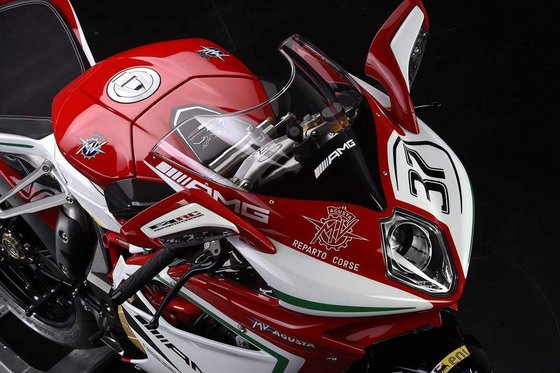
Owning an F4 requires dedication. Here’s what to prioritize:
- Valve Adjustments:
-
Check every 12,000 km (7,500 miles). Intake valves: 0.15–0.24 mm (0.006–0.009 in), exhaust: 0.20–0.29 mm (0.008–0.011 in). Use quality shim kits.
-
Oil and Filters:
-
MV recommends 10W-60 fully synthetic oil. Change every 5,000 km (3,100 miles).
-
Brakes:
-
Upgrade to sintered pads for track use. Flush fluid annually with DOT 4.
-
Chain and Sprockets:
-
The 15/40 sprocket combo wears quickly. Fit a DID 525 chain for longevity.
-
Suspension Tuning:
- The RC’s Öhlins TTX shock benefits from periodic nitrogen recharges.
MOTOPARTS.store Recommendations:
- Performance Exhaust: Unleash the F4’s voice with a titanium slip-on.
- Braided Brake Lines: Improve lever feel and heat resistance.
- Quick-Shifter Kits: Retrofit EAS 2.0 for seamless gear changes.
Conclusion
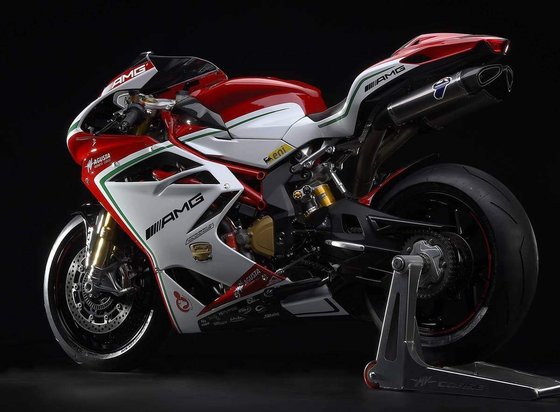
The MV Agusta F4 1000 RR isn’t for everyone—and that’s the point. It’s a motorcycle that demands respect, rewards skill, and turns every ride into an event. While rivals focus on lap times and practicality, the F4 thrives on emotion. From its spine-tingling exhaust note to its race-bred electronics, this is a bike that reminds us why we fell in love with motorcycling.
Whether you’re chasing apexes or compliments, the F4 delivers. And with the right care (and a few upgrades from MOTOPARTS.store), it’ll keep doing so for decades.
Ride fast. Ride beautiful.











Specifications sheet
| Engine | |
|---|---|
| Stroke: | Four-stroke |
| Max power: | 195 kW | 261.0 hp |
| Max torque: | 111 Nm |
| Fuel system: | Fuel Injection (MVICS with Ride-By-Wire) |
| Lubrication: | Wet sump |
| Max power @: | 13400 rpm |
| Displacement: | 998 ccm |
| Max torque @: | 9600 rpm |
| Bore x stroke: | 79.0 x 50.9 mm (3.1 x 2.0 in) |
| Configuration: | Inline |
| Cooling system: | Liquid |
| Compression ratio: | 13.4:1 |
| Number of cylinders: | 4 |
| Valves per cylinder: | 4 |
| Dimensions | |
|---|---|
| Wheelbase: | 1430 mm (56.3 in) |
| Dry weight: | 191 |
| Seat height: | 830 mm (32.7 in) |
| Overall width: | 750 mm (29.5 in) |
| Overall length: | 2115 mm (83.3 in) |
| Ground clearance: | 115 mm (4.5 in) |
| Fuel tank capacity: | 17.0 L (4.5 US gal) |
| Drivetrain | |
|---|---|
| Final drive: | chain |
| Gear ratios: | ['14/37', '16/33', '18/31', '20/30', '22/29', '21/25'] |
| Transmission: | 6-speed cassette-style |
| Primary drive: | 48/82 |
| Rear sprocket: | 41 |
| Front sprocket: | 15 |
| Maintenance | |
|---|---|
| Engine oil: | 10W60 |
| Brake fluid: | DOT 4 |
| Spark plugs: | NGK CR9EB |
| Spark plug gap: | 0.7 |
| Coolant capacity: | 1.9 |
| Forks oil capacity: | 1.4 |
| Engine oil capacity: | 4.5 |
| Engine oil change interval: | Every 5000 km or annually |
| Valve clearance (intake, cold): | 0.15–0.24 mm |
| Valve clearance check interval: | 24,000 km (15,000 mi) |
| Valve clearance (exhaust, cold): | 0.20–0.29 mm |
| Recommended tire pressure (rear): | 2.3 bar (33 psi) solo / 2.9 bar (42 psi) with passenger |
| Recommended tire pressure (front): | 2.3 bar (33 psi) |
| Additional Features | |
|---|---|
| Wheels: | Forged aluminum alloy (3.5 x 17 in front / 6.0 x 17 in rear) |
| Electronics: | MVICS 2.0 with 8-level traction control, 4 engine maps, EAS 2.0 quickshifter |
| Steering damper: | Öhlins manual adjustment (F4 RC) |
| Exclusive (F4 RC): | Titanium exhaust, magnesium engine covers, carbon fiber bodywork |
| Chassis and Suspension | |
|---|---|
| ABS: | Bosch 9 Plus with Race Mode (optional) |
| Frame: | CrMo Steel Tubular Trellis with aluminum swingarm pivot plates |
| Rear tire: | 200/55-z-17 |
| Front tire: | 120/70-z-17 |
| Rear brakes: | 1 x 210 mm disc, Nissin 4-piston caliper (ABS on some models) |
| Front brakes: | 2 x 320 mm discs, Brembo radial 4-piston calipers (ABS on some models) |
| Rear suspension: | Sachs monoshock, adjustable compression/rebound damping (Öhlins TTX36 on F4 RC) |
| Front suspension: | Marzocchi USD telescopic fork, adjustable rebound/compression damping and preload (Öhlins NIX 30 on F4 RC) |
| Rear wheel travel: | 120 mm (4.7 in) |
| Front wheel travel: | 120 mm (4.7 in) |



